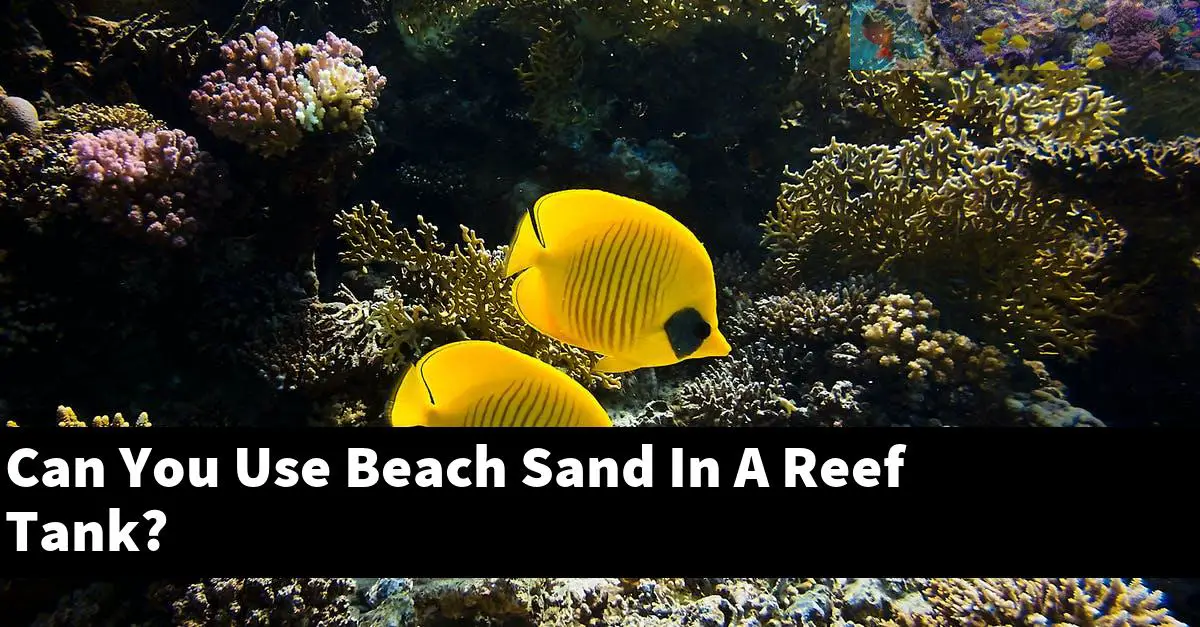Beach sand can be used in a reef tank, but it is not recommended as it can contain high levels of pollutants that can be harmful to your reef.
Is it safe to use beach sand in a reef tank?
Beach sand can be used in reef tanks, but there are a few things to keep in mind.
- First, make sure the sand is clean and free of any toxic material.
- Second, make sure the sand is not too large or too small.
- Finally, make sure the sand is evenly distributed in the tank.
Will beach sand affect the water quality in a reef tank?
One possible concern with beach sand in reef tanks is its potential to contaminate the water with sediment, bacteria, and other pollutants. In general, it’s important to keep reef tanks clean and free of debris to maintain high water quality.
How does beach sand compare to other substrates for a reef tank?
Beach sand is a common substrate for coral reef tanks. It is composed of small, rounded particles that are easily spread and worked into the aquarium substrate.
This type of sand is also low in minerals, so it is not as beneficial as other substrate types for a reef tank. However, beach sand is cheap and easy to find, so it is well suited for beginner reef tank setups.
Why is live sand sometimes used in reef tanks?
Live sand is a natural filter material that can be used in reef tanks. Live sand helps to remove organic material and other toxins from the water, and it also helps to create a natural coral reef environment.
Live sand can be purchased in bulk and added to the tank, or it can be placed in a filter unit.
What are the benefits of using beach sand in a reef tank?
There are many benefits to using beach sand in a reef tank. The sand is high in calcium and other essential minerals, which can help to strengthen coral reefs.
Additionally, the sand helps to create a smooth, stable substrate on which coral can grow.
Finally, the sand is light and easy to move, which can make maintenance and upkeep much easier.
Are there any drawbacks to using beach sand in a reef tank?
There are a few potential drawbacks to using beach sand in a reef tank.
- First, beach sand is often very porous and can absorb a lot of water and dissolved substances from the tank. This can cause problems with water chemistry and the health of the coral and other organisms in the tank.
- Second, beach sand is often packed very tightly and is difficult to work with. This can make it difficult to clean the tank and move objects and coral around.
- Finally, beach sand can also be a source of pollutants, including bacteria and sediment, which can damage the tank and the coral.
How do I choose the right type of sand for my reef tank?
There are many types of sand that can be used in a reef tank, depending on the type of reef you want to create. The most popular types of sand for reef tanks are silica sand, aragonite sand, and calcium sand.
Silica sand is the best type of sand for creating a reef because it is porous and can hold a lot of water. Aragonite sand is also a good type of sand for reef tanks, but it is not as porous as silica sand.
Calcium sand is not a good type of sand for reef tanks because it can become cloudy and build up on coral and other plants.
Summary
Beach sand can be used in a reef tank, but it is not recommended because it can contain high levels of pollutants that can be harmful to the reef.

